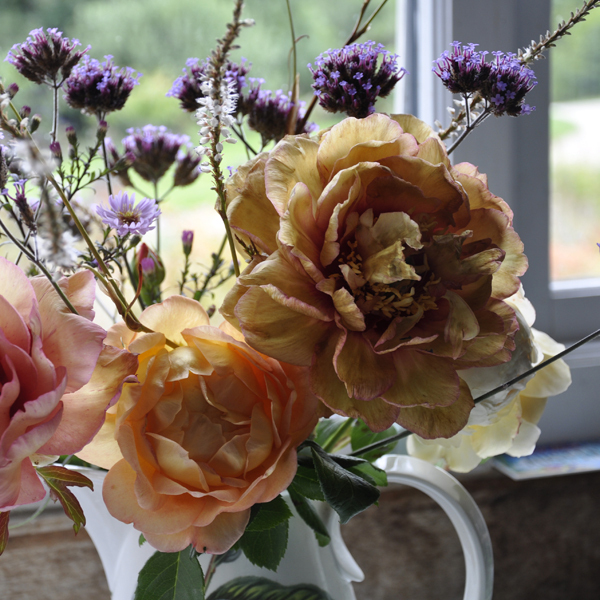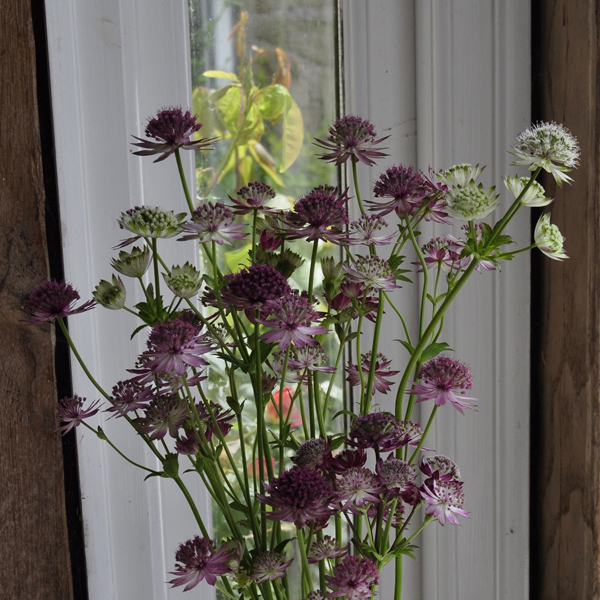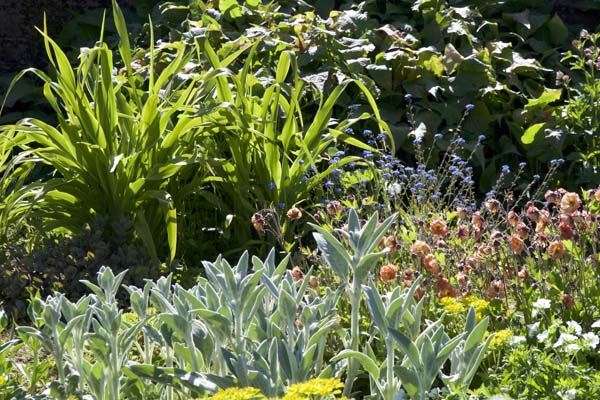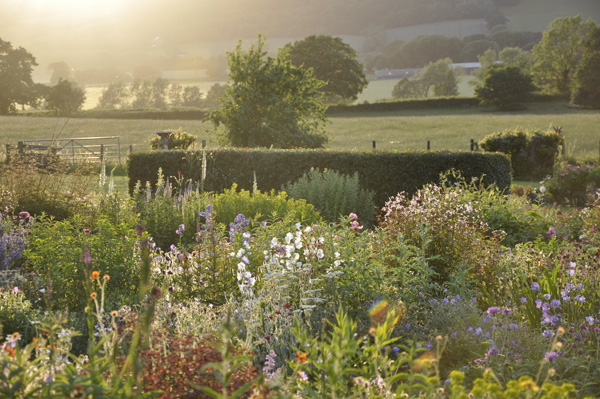Perennials for cutting
Perennials have been grown as cut flowers for many years. Long before the Dutch flower markets became the main source for cut flowers, British nurseries, especially around London, grew perennials purely for cutting. Crates of flowers would be sent daily by train to Covent Garden. All were cut according to the season from the same perennials grown in gardens. Today the trade is so big that flowers are sourced from all over the world. Even so, some are cut from familiar garden plants. Enter any supermarket and near the doors you will find sprays of Asters, Phlox and Gypsophila nestling within bunches of cellophane wrapped flowers; all plants that are easily grown in the garden.




Perennials can be cut throughout the year: June irises, July Echinops, Verbena and Hosta, August Echinacea, Anthemis and Phlox, September Verbena, Sanguisorba and Aster
Choosing Where To Grow Perennials For Cutting
The space available will dictate what you can grow. If a lot of flowers are required then a specially dedicated area is best. It could be part, or all of the vegetable patch or an allotment. If space is a luxury perennials can be incorporated into a border. In a border the best perennials to grow are those that produce great quantities of flower over a long period. This is because, once the blooms are picked, the plant will not look denuded. It is also important that the site is sunny. Flowers that lean toward the sun can have wobbly stems that won’t look good in a vase. One way to keep the stems straight is to grow them through flower hoops or pea-netting strung horizontally between bamboo canes.
Choosing The Right Perennials For Cutting
Besides choosing long-flowering perennials, a range of flower sizes will help add variation to the vase. Big flowered perennials like Delphinium, Echinacea and Achillea will provide copious amounts of colour. To fill the space around these, grow perennials that produce sprays of small flowers. Brightly coloured Geum (Avens) are easy to grow, as is Alchemilla mollis (Lady’s Mantle) with frothy sprays of tiny, lime green flowers that can be incorporated into any arrangement. The flowers of Limonium platyphyllum (Perennial sea lavender), Gypsophila paniculata ‘Bristol Fairy’ and Eryngium (Sea holly) last for weeks in a vase. Astrantia (Masterwort) and Centaurea (Perennial conflower) are beautiful and flower generously, but have a limited bloom period. Persicaria amplexicaulis varieties (Bistort) and Sanguisorba (Burnet) are not commonly used in arrangements, but the slim, poker-like flowers last for ages in water as do Knautia and Verbena bonariensis.




Peonies make wonderful cut flowers as do Astrantia: Autumn flowers of Peony 'Callie's Memory', pink and white peonies with deep pink roses, P. 'Pillow Talk' with Sanguisorba and Astrantia, bunch of mixed astrantia in July
Perennial Cut Flowers With Scent
Scent can also be brought into the house. These days Peonies are a romantic choice for weddings and some varieties are fragrant. Peony ‘Mons. Jules Elie’ and Peony ‘Myrtle Gentry’ both have big, soft pink flowers that produce a fragrance that reminds me of roses. Phlox not only look great in a border and add bountiful colour to a vase, but the fragrance will punctuate the evening air. Finally, pick glamorous Bearded irises not just for the flowers, but the scent.




Many perennials are very easy to grow for cutting. These include Peony 'Nancy Nora', Alchemilla mollis, Phlox paniculata 'Orange Perfection', Aster ericoides 'Blue Wonder'
Grow Your Own Wedding Flowers
If you are a gardener, or a wanna-be gardener, then growing flowers for a wedding is a satisfying thought. It's not difficult, but as the flowers are for a wedding a little forward planning is required. I recently spoke to a customer about how she managed to grow the flowers for her niece’s wedding, an event she is replicating this year for the other niece. She started the previous year. This gave her time to discover what would look good at the time of the wedding.
Click here to see which perennials that are perfect for cutting


